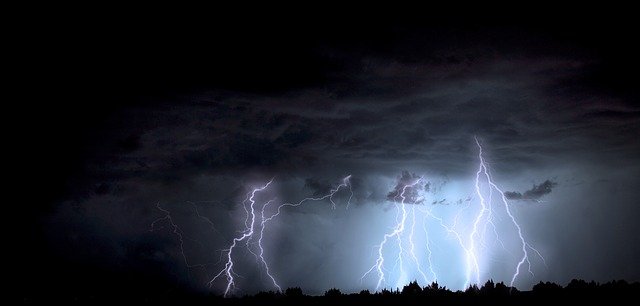What is an electric current? How do electric charges act? Information on the electric charges.

Source: pixabay.com
People have known some things about electricity for many hundreds of years. In fact, the word electricity comes from the Greek word elektron, which means amber. This is a yellow or yellowish-brown material formed from hardened tree sap. It is used to make beads and other jewelry. Long ago, the Greeks noticed that after amber had been rubbed, it attracted bits of straw. When some materials are rubbed, they get a certain amount of electricity, or an electric charge.
Before the comb or the rod becomes charged, it neither attracts nor repels the paper. But after the comb or the rod becomes charged, it first attracts and then repels the paper. The charged comb and the charged rod produce the same results. What happens is that the part of the charge passes between the charged object and the paper while they are touching. So the paper becomes charged, too. Then the charged objects repel each other. However, the charge that the paper gets from the comb is not the same kind as the charge that it gets from the rod.
As you have observed, there are two kinds of electric charges. Each kind has a name of its own. One kind is called a negative charge, and the other kind is called a positive charge. The hard-rubber comb, after being rubbed with wool, has a negative charge. The glass rod, after being rubbed with silk, has a positive charge. The paper charged from the comb becomes negatively charged, while the paper charged from the rod becomes positively charged.
You have leamed that every magnet has two poles. One is called the north pole, or N pole. The other is called the south pole, or S pole. Two N poles or two S poles repel each other. But an N pole and an S pole attract each other. The same thing is true of electric charges. Two negative charges repel each other, and so do two positive charges. But a negative charge and a positive charge attract each other. Many experiments have shown that electric charges always act toward each other in this way. So we can state two rules about electric charges: (1) Like charges repel each other. (2) Unlike charges attract each other. Of course, charged objects act in the same way as the charges that are on them.
When electric charges are produced by friction, the electrical energy is called frictional electricity. It is also called static electricity. Static means standing still or not moving. Years ago, scientists gave it this name because they then thought that electric charges produced by friction did not move. Scientists now know that electric charges move whenever an electric current flows.